Termite inspections are an important part of the home-buying process, and can help protect your investment in the long run. It's essential to understand the benefits of a termite inspection and how much it costs—both to you as the buyer and to the seller.
The ultimate guide to termite inspections explores how a professional inspection can help detect potential infestations and how much it costs for both parties involved. A termite inspection will alert you to any existing problems with wood destroying insects, which can be incredibly costly if not addressed promptly.
Additionally, it can provide you with peace of mind that your new home is safe from these pests. When it comes to cost, buyers typically pay anywhere from $50 to $250 for an inspection, depending on the size of their property.
Sellers may also have to cover some or all of this cost if there is a pre-existing infestation or damage found upon inspection. Ultimately, though, investing in a termite inspection can save you thousands down the road by ensuring your new home is free from pests before purchase.
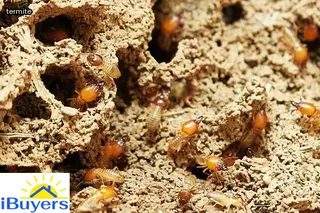
When it comes to identifying a termite inspection professional that is right for you, there are several factors to consider. First, you want to make sure the inspector is licensed and insured.
Ask for credentials and references from previous clients so that you can be sure the individual has the knowledge and experience necessary to provide reliable results. Additionally, cost is an important factor to consider when selecting a termite inspection professional.
It's important to understand exactly what services are included in the fee, as well as who pays for any additional treatments or repairs that may be needed after the inspection. Also, ask if they have additional fees or discounts available, such as discounts for repeat customers or referrals.
Finally, inquire about their availability in case you need them at short notice; some professionals offer emergency services which can be beneficial if time is of the essence. Ultimately, choosing the right termite inspection professional requires careful research; take your time and do your due diligence so that you can find a reliable option with whom you feel comfortable working with.
Termite inspections come in different forms, each with their own cost and who is responsible for payment. The most basic type of inspection is a visual inspection, which involves a qualified inspector looking for evidence of termites or termite damage.
This type of inspection is typically the least expensive option, but it can still cost hundreds of dollars depending on the size and complexity of the property being inspected. A more comprehensive termite inspection utilizes specialized equipment such as infrared thermography to detect hidden areas where termites may be present.
This type of inspection can be more costly than a visual inspection and may require additional fees for equipment rental, but it can also provide a comprehensive look at potential problem areas. In some cases, the buyer may be responsible for paying for both types of inspections when purchasing a home.
Lastly, an active infestation inspection will require pest control professionals to assess an existing infestation that has been identified by previous inspections or anecdotal evidence. These inspections are usually more costly due to the need for specialized treatments and follow-up visits to ensure that any remaining termites are eradicated.
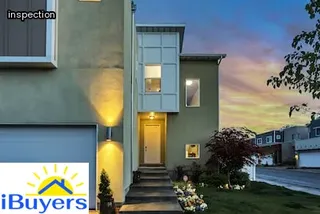
During a termite inspection, a qualified inspector will evaluate your home for signs of an infestation. They will do a thorough visual examination of the interior and exterior of the building, looking for any active infestations and potential warning signs.
The inspector will also look for any conditions that may be conducive to an infestation, such as standing water, organic debris, and easy access points for termites. The inspector may use specialized equipment such as a moisture meter to detect areas with high levels of humidity which can contribute to a higher risk of infestation.
In addition to the visual inspection, they may also take wood samples from the interior structure and send them off to be tested in order to confirm if there is an active infestation. Once the inspection is complete, the inspector will provide their findings and recommend next steps moving forward.
Termite inspections are an important part of home ownership, as they provide an opportunity to identify any potential infestations or damage before it becomes an expensive problem. After a thorough inspection, the inspector will provide a report to the homeowner detailing any issues that were discovered and whether further treatment is necessary.
In some cases, additional treatment may be needed even if no termites have been found. This is because there may be conditions around the home which indicate that a termite infestation could occur in the future.
For this reason, it's important to ask your inspector about what type of treatment should be done after the inspection. They can provide advice on which method would be best for your specific situation and how much it would cost.
Additionally, depending on whether you are buying or selling a home, you may need to determine who pays for this additional treatment - so make sure to ask about this too!.

Preparing your home for a termite inspection is essential for ensuring an accurate and thorough assessment of the risk of infestation. Start by removing any objects or debris near the exterior of your home that may be blocking access to areas where termites can hide.
This includes items such as mulch, firewood, and landscaping rocks. Inside the home, make sure all furniture and other items are moved away from walls and out of closets so that inspectors can get a complete view of any potential damage.
Additionally, it’s important to seal up any cracks in the foundation or walls to help prevent future infestations. Finally, take time to inspect your own property for signs of termites before the inspector arrives.
Look for mud tubes, shed wings, and other evidence of activity. Taking these steps will help ensure that your home is ready for an effective termite inspection.
Once a termite inspection has been completed, the next step is to determine how to deal with any infestation that was found. Depending on the severity of the infestation, homeowners may be able to take care of it themselves or they may need to hire a professional exterminator.
Homeowners should be aware that DIY solutions are often not as effective as professional treatments and can even make the problem worse. If an infestation is severe, treatment may involve fumigation or spot treatments that require specialized equipment and knowledge.
Extermination costs vary based on the type and severity of the infestation, but generally fall between $150-300 for a single treatment. It is important for homeowners to understand who pays for this cost; in some cases it will be up to them while in other cases their insurance company may cover all or part of the expense.

Knowing when it’s time to re-inspect for termites is an important part of termite prevention. An initial inspection should be done to assess the risk of a termite infestation and provide an estimate of the cost for treatment, if necessary.
After that, regular inspections are recommended to catch any new signs of infestation and to ensure that your home remains pest-free. Depending on the type of termite present and the severity of the infestation, repeat inspections may be necessary every few months or annually.
Regular inspections can help detect potential issues before they become a costly problem. It is also important to know who will pay for the inspection—typically homeowners are responsible for paying for a termit inspection, although some pest control companies may offer discounts or incentives for frequent customers.
Whatever your situation, understanding how much a termite inspection costs and who pays can help you plan ahead and protect your home from pests.
Seeing signs of a termite infestation can be worrying, but it's important to spot the signs early so you can take the necessary steps to protect your home from further damage. Termites feed on wood and other cellulose materials, so common signs of an infestation include buckling wood, blistered paint or wallpaper, mud tubes on walls or foundations, and hollow-sounding wood when tapped.
They also tend to swarm in the springtime, so if you see wings near windowsills or doorways, this could be a sign of a termite infestation. It's also possible to find discarded wings in spider webs around your home.
In addition to these visual cues, another common sign is the presence of little piles of sawdust near baseboards or other wooden structures throughout your home. If you notice any of these signs in or around your home, it's important to call a professional for an inspection as soon as possible.

Termite infestations can be costly, and prevention is key. Keeping an eye out for signs of a possible infestation, such as mud tubes on the exterior walls, or discolored or drooping drywall, is essential in stopping potential damage before it starts.
Regular inspections are also important to detect any signs that might have been missed. Ensuring that wood materials are not in contact with soil, properly sealing cracks and crevices around windows and door frames, replacing damaged wood when found, and keeping vegetation away from the home’s foundation can all help deter future infestations.
Additionally, checking for moisture levels within the home is critical; areas of high humidity provide termites with an ideal living environment. If these issues are identified and corrected promptly, homeowners can avoid expensive repair bills down the road.
Termite infestations can be identified in a variety of ways, and the severity of the problem will determine how much it will cost to treat. Visual inspections are one way to detect an infestation, but they may not always be accurate.
A more reliable option is a termite inspection by a professional pest control company. This type of inspection provides an in-depth look into the extent of the infestation, as well as potential damage caused by termites.
The price of a termite inspection can vary greatly depending on the size of the home and any existing damage that has already been done. Treatment costs also depend on how large the affected area is and what type of treatments are required.
Homeowners should factor in these costs when considering whether or not to have a termite inspection done. Additionally, it's important to note that homeowners may be responsible for some or all of the treatment costs depending on their insurance policy.
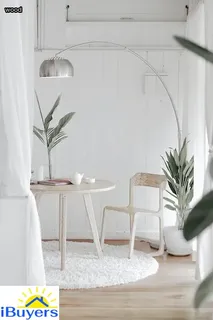
Drywood termites and subterranean termites are both capable of causing significant structural damage to homes, but it is important to recognize the differences between them. Drywood termites typically live in dry wood, such as furniture or dead trees, while subterranean termites live underground in colonies and build mud tubes made from soil and saliva which provide them with moisture.
In addition, drywood termites do not need contact with the soil in order to survive, whereas subterranean termites require contact with the soil in order to obtain moisture and nutrients. The two species of termite also have different feeding habits.
Drywood termites feed on all types of wood material, while subterranean termites only feed on cellulose material found in wooden structures. As such, a thorough inspection by a qualified pest control professional is necessary when dealing with either type of infestation.
It is important to understand the differences between the two types of termite infestations so that you can make an informed decision about what kind of treatment is necessary and how much it will cost.
Termite inspections are a critical part of home ownership as they can help identify areas at risk for termites. An experienced inspector will check for signs of current or past infestations, structural damage, and assess the general condition of the property.
During an inspection, the inspector will look for potential entry points such as damaged wood, cracks in foundations, and gaps around pipes. They may also use specialized tools like moisture meters and gas probes to measure humidity levels and detect any hidden nests.
Additionally, the inspector will evaluate how well-maintained the home is by checking for proper drainage and grading around the foundation walls. All these factors can increase or decrease the likelihood of termite infestations in a particular area.
Therefore, it is important to hire a qualified professional to carry out a thorough inspection before making any decisions regarding treatment options and cost estimates.
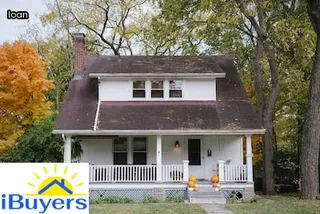
Moisture control is a critical factor when it comes to limiting the presence of termites. Areas that are prone to high moisture levels can be attractive hosts for termite colonies, as moisture provides an ideal environment for them to thrive.
Without proper moisture control, termites can quickly take up residency in a structure and begin causing damage. To help prevent this from happening, homeowners should ensure that there is adequate ventilation to help keep the area dry and free from excess moisture.
Additionally, any leaks or drainage issues should be addressed immediately so that they do not become sources of excess moisture. Taking the time to inspect and address water-related issues around your home can go a long way in reducing your risk of having a termite infestation.
When it comes to detecting and mitigating potential termite infestations in a home, professional termite inspections are the way to go. Professional inspections provide several advantages over DIY methods that can save time and money in the long run.
For starters, professionals have the expertise and knowledge to properly identify signs of an infestation as well as any damage caused by the pests. They also possess the specialized tools necessary to detect termites living below ground or inside walls and other hard-to-reach areas.
Furthermore, they know exactly what treatment is most effective for a particular situation, so you don’t have to worry about wasting resources on ineffective treatments. Additionally, because professionals are thorough in their inspections and often use multiple forms of detection such as visual inspection, moisture meters, thermal imaging cameras and radar devices, they will be able to quickly locate active infestations and treat them properly before further damage occurs.
Finally, professional inspectors are up-to-date with all relevant laws and regulations regarding pest control which helps ensure that all work is carried out safely and legally.
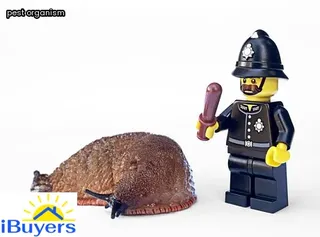
Termite inspections require specialized equipment to detect the presence of termites and other wood-destroying insects. Thermal imaging cameras are used to detect temperature differences that could indicate the presence of termites or moisture problems, while radar detection devices can detect movement behind walls.
Moisture meters are another important tool, as they measure the amount of moisture in the wood that can be an indicator for termite activity. Boroscopes and borescopes with video cameras allow inspectors to see deep inside wall cavities and identify any damage caused by termites.
Additionally, sounding devices are used to listen for activity in walls, while magnifying glasses help inspectors look at insect parts more closely. Finally, portable X-ray systems provide a non-destructive way to inspect wood for signs of infestation.
All of these pieces of equipment help pest control professionals accurately assess a property’s condition and determine whether further action needs to be taken against possible infestation.
A pest control inspection is an important step in protecting your home from termite damage. The cost of a pest control inspection can vary depending on the size and condition of the home, as well as the type of termite being inspected.
Generally speaking, an inspection for subterranean termites can range anywhere from $75 to $200, while an inspection for drywood or dampwood termites can be more expensive. In some cases, the cost of a pest control inspection may be covered by your homeowner’s insurance policy.
If not, it is important to factor this in when budgeting for home maintenance costs. An experienced pest control technician will be able to provide you with an accurate estimate based on the size and condition of your home.
A: The cost of a termite inspection varies depending on the size and complexity of the property, but typically ranges from $75 to $150.
A: The cost of a termite inspection varies, but typically ranges from $75 to $150. Depending on the situation and agreement between the buyer and the seller, either party may be responsible for the costs associated with the inspection. Signs of infestation may include mud tubes, wood damage, wings or discarded wings near doorways or windows, and/or swarms of flying insects.
A: The cost of a termite inspection by a licensed professional can vary depending on the size of the property and other factors. Generally, though, you can expect to pay between $75 - $150 for an inspection.